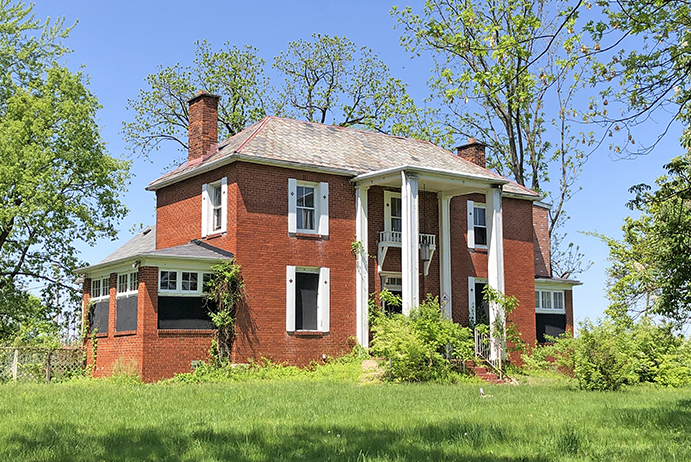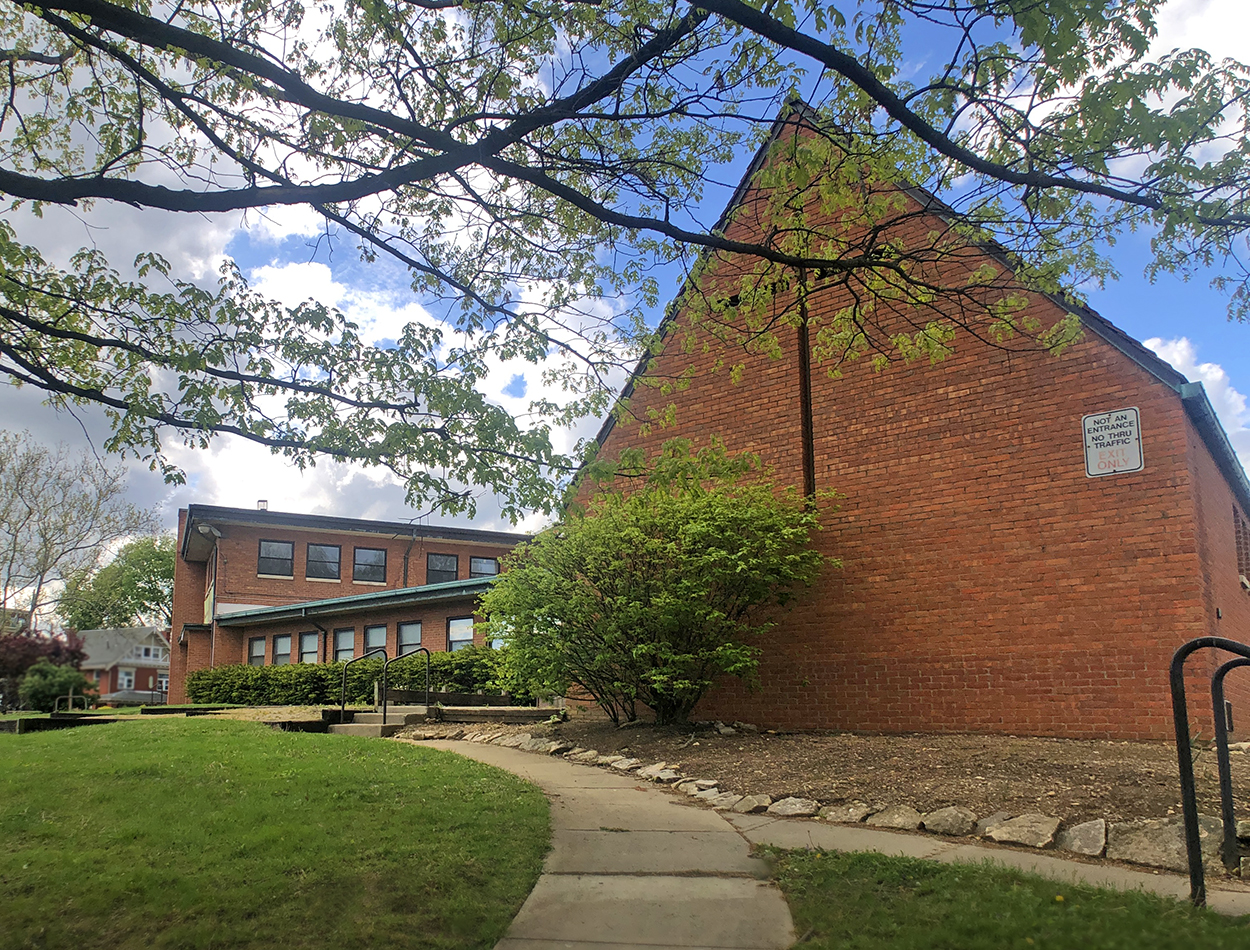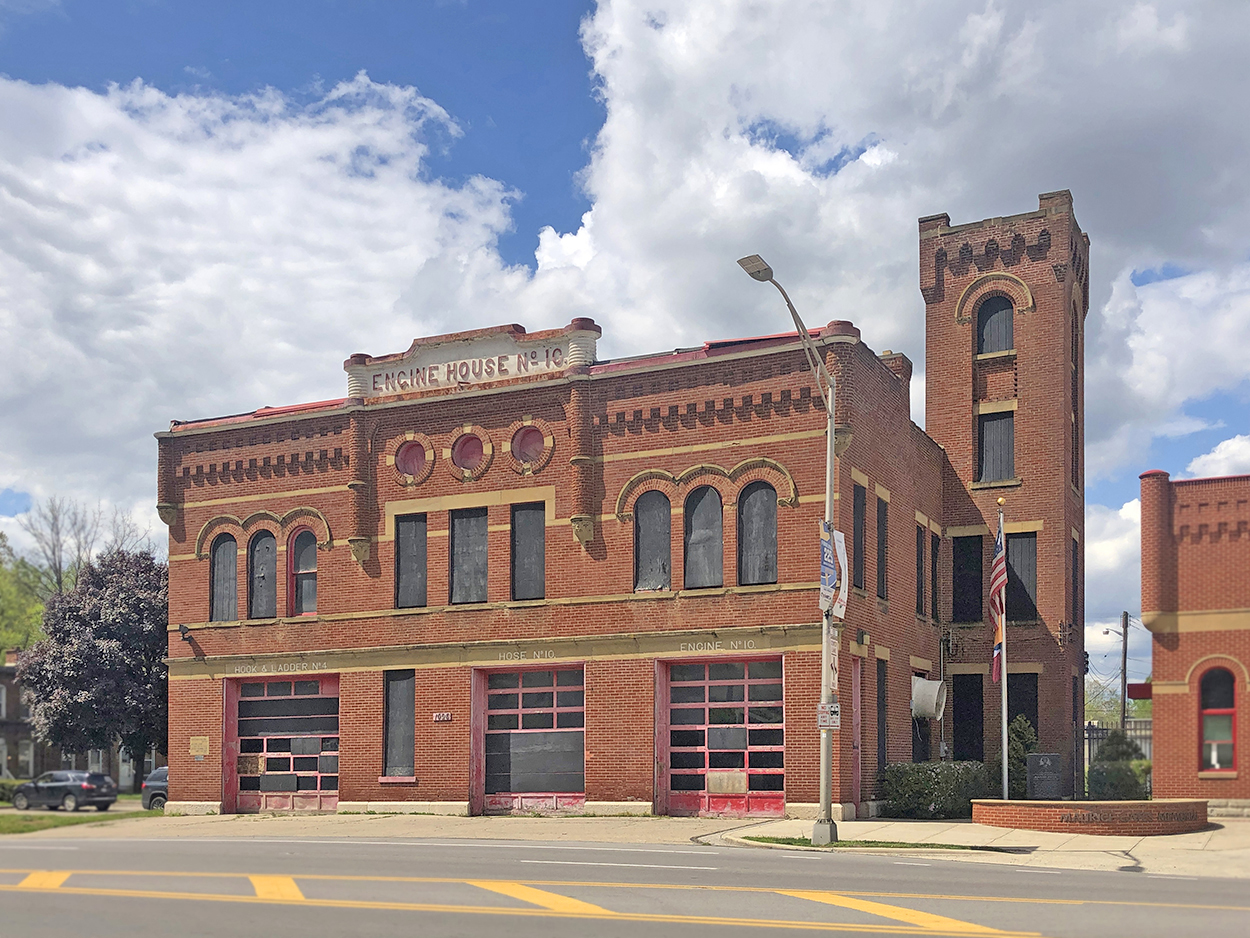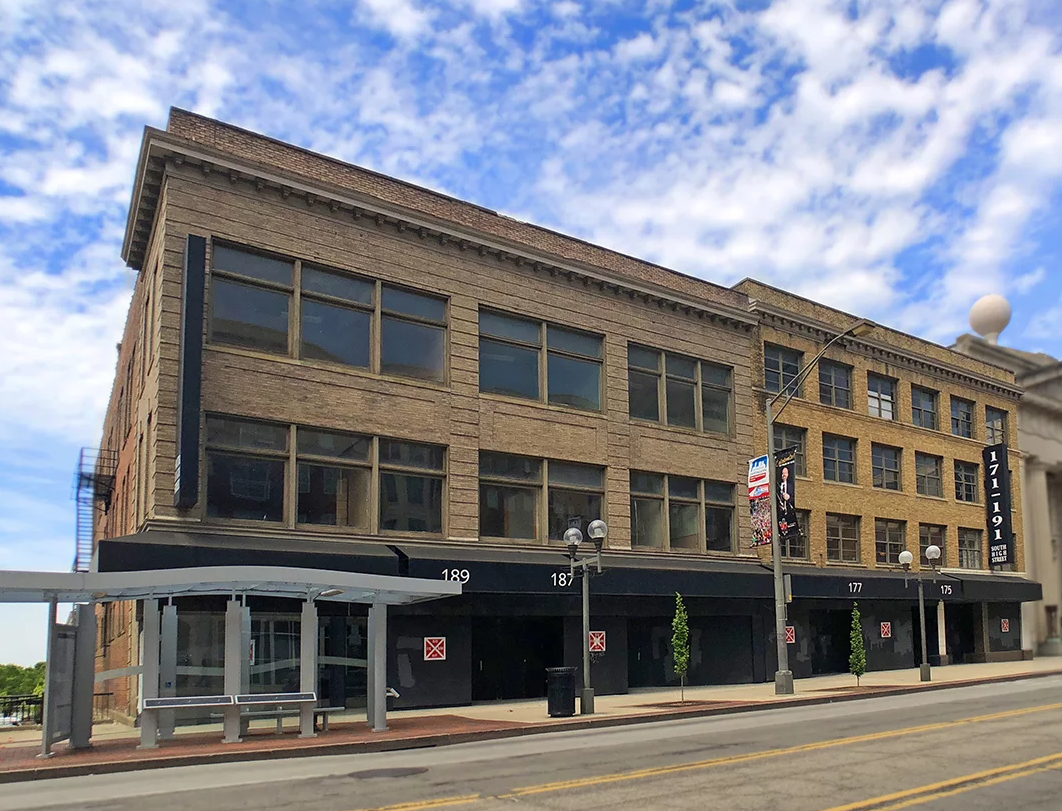Hayes-Henderson House
1544 Atcheson St, Columbus, OH 43203 (King-Lincoln Bronzeville)
Building Date: c1860
Owner: Ohio State University (as of May 2023 listing)
Franklin County Auditor File: Parcel ID: 010-039613-00
This historic “I-House” residence was likely built by Judge John Green somewhere between 1865 and 1868, on farmland once owned by the family of a U.S. president, Rutherford B. Hayes. The symmetrical “I-House” style was commonly built in the rural farm areas of Indiana, Illinois and Iowa and was prevalent in Ohio as well. In 1942, the house was sold to prominent local attorney Leon Pearl Henderson who over the years established his home as a social center for the community and hosted many prominent African-American entertainers there. This was especially important during the era of segregation. The house was sold to Leon’s daughter, Lee, who turned it into the nation’s first Bed and Breakfast owned and operated by an African American.
The house was sold to PACT (Partners Achieving Community Transformation) by the family. There it remained vacant for a number of years. In February 2023, during Black History Month, The Ohio State University announced that it had purchased the property from PACT and their intention of demolishing the house for a new 3-story, 80+ bed rehabilitation center. After Preservation Ohio and Columbus Landmarks communicated our intention of listing the Hayes-Henderson House on our 2023 Most Endangered Sites List, The Ohio State University stated in the press that they would be taking demolition off the table for the house and investigating other uses. With the university’s presidency role, one that is responsive to community concern, remaining vacant and unable to oversee agendas, we remain concerned about the house’s future to stay within the community.

Summit United Methodist Church
82 E. 16th St Columbus, OH 43201 (University District)
Building Date: 1954, renovated interior 1983
Owner: Summit United Methodist Church AFDT (as of May 2023 listing)
Franklin County Auditor File: Parcel ID: 010-067117-00
The building was built in 1954 as the Wesley Foundation at the Ohio State University. In 1977, the Wesley Foundation, Indianola United Methodist Church, and University United Methodist Church merged to form the ‘new’ Summit United Methodist Church. The exterior of the former Wesley Foundation remained as is, but the multipurpose room was renovated to become the church’s new worship space by award-winning mid-century architect, Edward Sövik. Flexible seating and podiums that can be rearranged, plus “non-representational art” illustrate how an ordinary space can be repurposed to accommodate both civic and sacred functions. The design does not set apart the space for worship alone but is adaptable and suitable for non-church functions as well. It is a beautiful modern artifact in very good shape that should be adaptively repurposed and preserved.
Summit United Methodist Church has partnered with a developer for the site. The developer has proposed an insensitive luxury apartment complex to replace the building which seems to neither meet the housing affordability needs of the area nor the height restrictions for the district. We remain vigilant on the future of this site – once the home of affordable childcare and community engagement – while also being an example of modern devotional space architecture.

Fire Engine House no. 10 – 1096 West Broad St
Year Built: 1896
Property Owner: City of Columbus, Office of Development (as of May 2023 listing)
Located in Franklinton, on the west side of Columbus, Fire Engine House no. 10 is one of the oldest fire engine houses in the city. Built in 1896 and designed by Harris Architects, very little has changed since its construction. Featuring a 55-foot hose tower, four engine bays, two fire poles, and an ornately designed brick facade, the buildings is designed in an Italianate style. Originally, designed for horse-drawn fire engines, by 1912 the station became only the second station in the city equipped with motorized vehicles—one of which was used to pump water out of the station after the Great Flood of 1913. After suffering a series of fires, through the 1970s, the city proposed that the station be closed, along with a nearby station in the Hilltop, and build a new larger station further westward.
However, the proposal fell through and the station remained open and operational until 2008 when the fire fighters begrudgingly left their posts at Engine House No. 10 for a newly built station down the road. Having sat vacant since its closure, the engine house is owned and used for storage by the City of Columbus. Based on eyewitness reports, the building is deteriorating and there are significant leaks in the roof. It has been proposed by the folks with the Franklinton Civic Association that an effort be made to get the building back on the City’s Register for Historic Places and that the station be brought up to code and used as a possible community center.
With all the development that surrounds the old station in Franklinton, it is no wonder there’s a strong effort to preserve one of the neighborhoods last remaining historic landmarks. Currently, the site on Broad Street, one of the major thoroughfares of Columbus remains empty and inactivated. We are concerned about potential neglect of the structure and how this is affecting the block in a vacant state.

Downtown YMCA
40 W. Long St., Columbus, Ohio 43215
Building date: 1924
Owner: Columbus Downtown Development Corporation (as of May 2023 listing)
Franklin County Auditor File: Parcel ID: 010-067063-00
Columbus’s Downtown YMCA has stood at Front and Long streets for nearly 100 years. The seven-story structure, designed by Walter Shattuck with Jacobethan and Gothic revival influences, is believed to be the only structure with elements of both styles in the city, and the only nondenominational structure in Downtown Columbus in either style. The massive building has a well-preserved façade on Long Street that is elaborately decorated. It is described as castle-like, with stone buttresses, crenellated battlements, belt courses, copings, and finials. Its interiors retain innumerous original elements, including varnished wood paneling, built-in bookcases, fireplaces, and doors with pointed arches and leaded-glass windows within its first-floor social spaces. The building stood holding one of the most important civic and cultural institutions in the city, not only providing housing for over 500,000 people, but providing food, education, vocational training, and more. Here the YMCA established the first evening high school in Columbus, the first cooperative day school (allowing students to divide their days between learning and industrial work), and opened colleges for law, arts and sciences, and commerce. In the 2010s, the YMCA realized it would not have the budget to renovate the building, and is in the process of re-establishing a community center to serve downtown Columbus.
The building was sold in 2023. The YMCA and the Columbus Downtown Development Corporation hopes the building will be repurposed, and the building’s potential for reuse has attracted numerous developers with interest. During the current vacancy period, the Columbus Downtown Development Corporation has been a good steward of the Downtown YMCA building by repairing damage and keeping on the utilities; Columbus Downtown Development Corporation has a proven track record for saving the character of other Columbus places.
Columbus Landmarks is advocating for Columbus Downtown Development Corporation to be bold in their plans to engage the community in protecting the building’s architectural integrity and affordable housing, setting the stage for any selected developer(s) to be guided by our city’s history of providing below market rate housing downtown. It is in this spirit that we list the Downtown YMCA on our 2023 Most Endangered listing.

Old Lazarus Block
171-191 South High Street, Columbus, Ohio 43215
Building dates: 19th c. (171-177 S. High), 1906 (185-191 S. High)
Owner: Harsax Management Company (as of May 2023 listing)
Franklin County Auditor File: Parcel ID: 010-037820-00
The Old Lazarus Block has served as a commercial center to Columbus for over two centuries. The structures have seen a wide variety of retail and service uses during this time, including shoe stores, groceries, opticians, hatters, jewelers, a liquor store, and a car dealership. The buildings exhibit early 20th century facades; 185-191 South High, once considered a landmark corner for Columbus, dates to 1906, while 171-177 South High was constructed sometime in the 19th century and was remodeled in the second decade of the 20th century. The latter building was once part of the first Lazarus department store, which grew to encompass a group of seven buildings on the site until it moved to the Lazarus Building in 1909. The same building was again noted in the 1930s, for housing the first Kroger store in Downtown Columbus, which was considered the first supermarket in the city. The Ohio National Bank building, listed on the National Register of Historic Places and actively being saved as part of the redevelopment efforts, was built in 1911, designed by the city’s preeminent architects Richards, McCarty & Bulford. The firm envisioned the structure with an ornate Greek Revival style, reflecting the design chosen for the Ohio Statehouse nearby.
The bank and commercial buildings, as well as a brick garage dating to 1910, were sold to a development company in 2023. The developer plans to renovate the bank building to the highest preservation standards – which we applaud — but to also demolish the remaining Old Lazarus Block. Here, Columbus Landmarks is calling for a more sensitive treatment and reuse of the Old Lazarus Block.





































